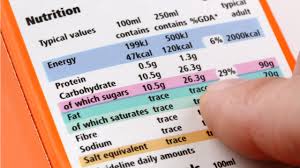Understanding Food Labels

When shopping for groceries, food labels can be confusing. With all the numbers, percentages, and complicated ingredient lists, it’s hard to know what’s actually healthy. Learning how to read food labels can help you make better choices for your health. Here’s a simple guide to help you decode them with ease.
1. Check the Serving Size
The first thing to look at is the serving size at the top of the label. Everything else on the label (calories, fat, protein, etc.) is based on this amount. If a package contains two servings, and you eat the whole thing, you need to double everything on the label!
2. Understand Calories Per Serving
Calories tell you how much energy a food provides.
Low-calorie: 40 or fewer calories per serving
Moderate-calorie: Around 100 calories per serving
High-calorie: 400+ calories per serving
If you're trying to maintain or lose weight, keep an eye on this number and compare it with your daily needs.
3. Watch Out for Hidden Sugars
Many processed foods contain added sugars, even those that seem healthy. Sugar can be listed under different names, such as:
Sucrose
High-fructose corn syrup
Dextrose
Maltose
4. Look at Fat Content
Not all fats are bad!
Healthy fats (found in nuts, avocados, and olive oil) support heart health.
Trans fats & hydrogenated oils (found in processed snacks and fast food) should be avoided.
Tip: If you see “partially hydrogenated oils” in the ingredients, put the product back—it contains trans fats!
5. Check the Sodium (Salt) Level
Too much sodium can lead to high blood pressure and bloating. A low-sodium food has 140mg or less per serving. Aim to stay under 2,300mg per day for good heart health.
6. Fiber & Protein: Look for Higher Numbers
Fiber and protein keep you full longer and help with digestion and muscle health.
Fiber: 3g or more per serving is good; 5g+ is excellent.
Protein: Look for at least 5-10g per serving for a filling meal or snack.
7. Ingredients List: The Shorter, the Better!
The ingredients list shows what’s actually in your food. Here’s what to keep in mind:
✔ Ingredients are listed in order of quantity – the first few make up most of the product.
✔ Fewer ingredients = usually healthier food.
✔ Avoid artificial additives & preservatives (like artificial colors, flavors, and sweeteners).
Understanding food labels can help you make smarter, healthier choices at the grocery store. Focus on whole, minimally processed foods, check serving sizes, and be mindful of added sugars, fats, and sodium. With a little practice, reading labels will become second nature, making healthy eating easier than ever!